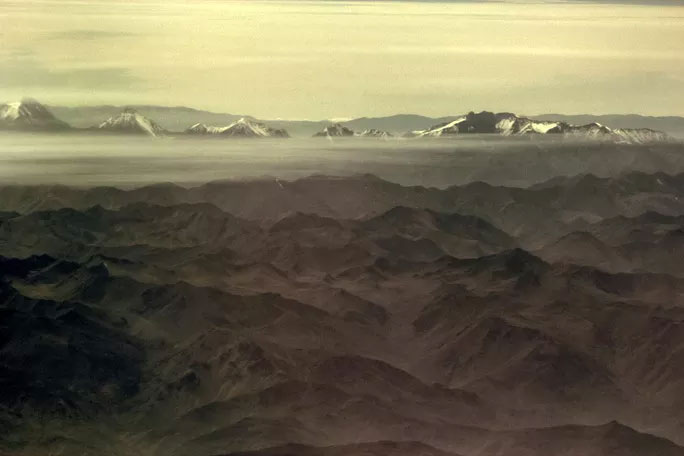Desert dust – fine and capable of soaring into the sky like phantoms – has the ability to destroy many pollutants, but it also silently causes frightening impacts.
A recently published study in Science Advances helps scientists gain a more comprehensive understanding of the relationship between soil and atmospheric cycles, leading to more accurate strategies in the effort to clean the Earth’s air and combat climate change.

The Atacama Desert, where iodine in desert dust transforms into gas in a mysterious way, like “phantoms” rising up and destroying the ozone layer – (Photo: Sam Hall)
A team of scientists from the University of Colorado Boulder (USA) discovered that iodine, a common chemical in soil that easily rises into the atmosphere with desert dust, has the ability to cleanse many forms of air pollutants, including ozone, which is extremely toxic to humans when present at ground level.
However, conversely, it allows many other greenhouse gases to persist longer, meaning that while it removes harmful substances that we inhale, it also contributes to global warming.
This finding also brings another warning: if it rises high enough, not from desert dust, but after being transformed and hidden in gas molecules—potentially through some human industrial activities—it could erode the ozone layer, which is a crucial shield for Earth against harmful radiation, according to SciTech Daily.
“Therefore, iodine should not be added to the stratosphere“ – warned Professor Rainer Volkamer, the lead author of the study.
Previously, through datasets obtained from survey flights off the coasts of Chile and Costa Rica, scientists found that the dust blowing in this region is astonishingly rich in iodine. Further observations from desert dust sources in Atacama and Schura in Chile and Peru showed that the iodine in this dust is rapidly transformed into gas.
The reason for this transformation is a question that requires further analysis, but scientists, as mentioned above, suspect it is due to some human activity.


















































